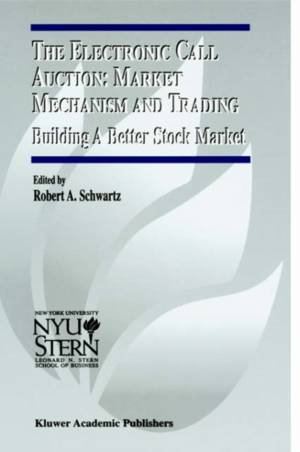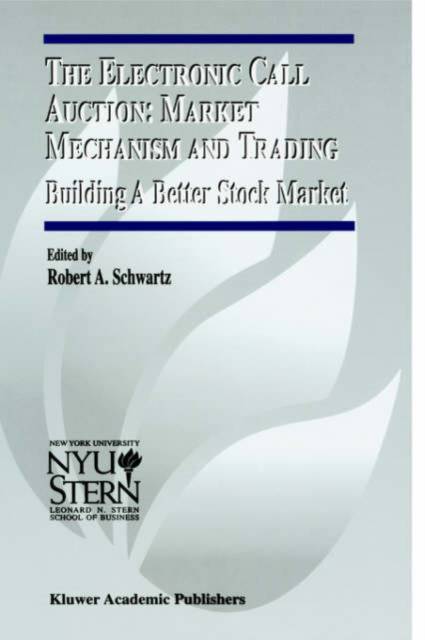
- Afhalen na 1 uur in een winkel met voorraad
- Gratis thuislevering in België vanaf € 30
- Ruim aanbod met 7 miljoen producten
- Afhalen na 1 uur in een winkel met voorraad
- Gratis thuislevering in België vanaf € 30
- Ruim aanbod met 7 miljoen producten
Zoeken
The Electronic Call Auction: Market Mechanism and Trading
Building a Better Stock Market
Hardcover | Engels | The New York University Salomon Center Financial Markets and Institutions | nr. 7
€ 251,45
+ 502 punten
Omschrijving
ROBERT A. SCHWARTZ The primary objective of this book is to consider how the inclusion of electronic call auction trading would affect the performance of our U.S. equity markets. The papers it contains focus on the call auction and its role in a hybrid market struc- ture. The purpose is to increase understanding of this trading environment, and to consider the design of a more efficient stock market. This book had its origin in a symposium, Electronic Call Market Trading, that was held at New York University's Salomon Center on April 20, 1995. Nearly 150 people from 16 different countries attended. At the time, three proprietary trading systems based on call auction principles (The Arizona Stock Exchange, Posit, and Instinet's Crossing Network) had been operating for several years and interest already existed in the procedure. Since the symposium, increasing use has been made of call auctions, primarily by the ParisBourse in its Nouveau Marchi: and CAC markets, by Deutsche Borse in its Xetra market, and in the U.S. by OptiMark. Rather than being used as stand alone systems, however, call auctions are now being interfaced with continuous markets so as to produce hybrid market structures, a development that is given considerable attention to in a number of the chapters in this book.
Specificaties
Betrokkenen
- Uitgeverij:
Inhoud
- Aantal bladzijden:
- 462
- Taal:
- Engels
- Reeks:
- Reeksnummer:
- nr. 7
Eigenschappen
- Productcode (EAN):
- 9780792372561
- Verschijningsdatum:
- 31/10/2001
- Uitvoering:
- Hardcover
- Formaat:
- Genaaid
- Afmetingen:
- 178 mm x 229 mm
- Gewicht:
- 807 g

Alleen bij Standaard Boekhandel
+ 502 punten op je klantenkaart van Standaard Boekhandel
Beoordelingen
We publiceren alleen reviews die voldoen aan de voorwaarden voor reviews. Bekijk onze voorwaarden voor reviews.










